#barneys new york beauty korea
Explore tagged Tumblr posts
Text
gifs by sewooonz
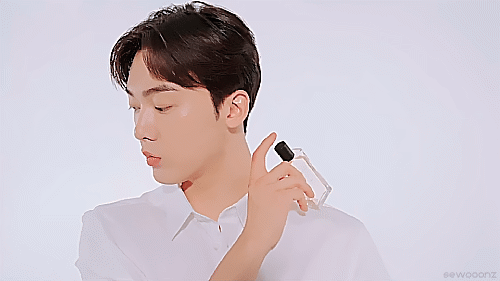
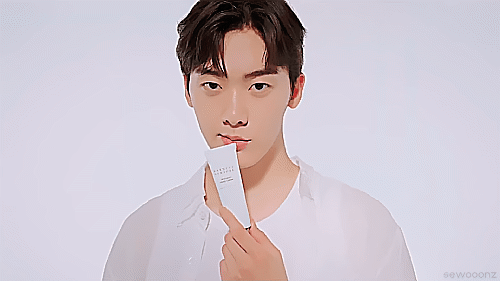

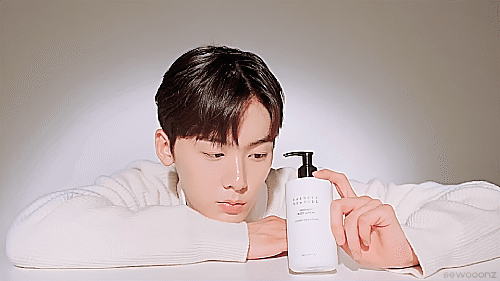
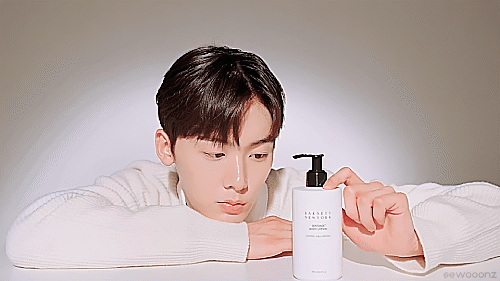
yoon sanha with barneys new york beauty korea (2024)
#sewooonz#my gifs#astro#yoon sanha#astro sanha#white#astronet#arohanet#ultkpopnetwork#kpopedit#maleidolsedit#kpopccc#kpopco#barneys new york beauty korea
16 notes
·
View notes
Photo

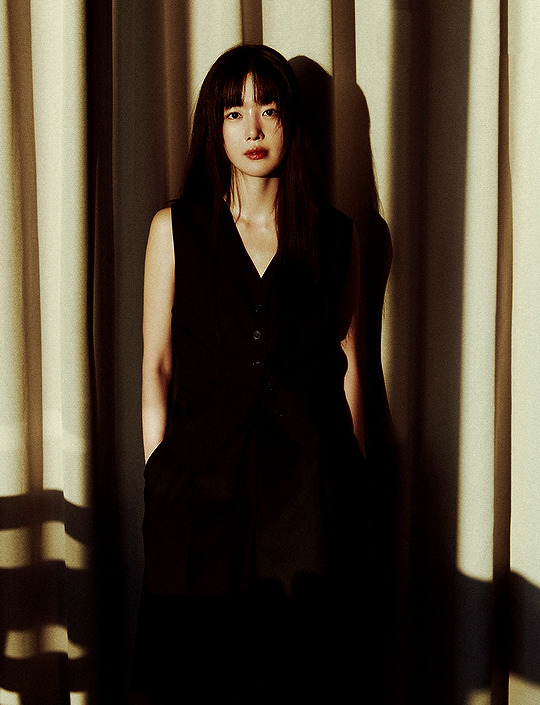

HAN SUN HWA 한선화 Barneys New York Beauty x Dazed Korea | March (2023)
#han sun hwa#kdramaladies#kdramaedit#kdramanetwork#kdramadaily#userbbelcher#kdramasource#asiancentral#dailyasiandramas#asiandramasource#cinemapix#cinematv#glamoroussource#dailywoc#userwocs#femaledaily#wonderfulwomendaily#pocpopculture#edits#hansunhwaedit
42 notes
·
View notes
Text
Grand Hall for Shinsegae Daejeon Art & Science, South Korea
Grand Hall for Shinsegae Daejeon Art & Science, South Korean Department Store, Commercial Building Project Design, Architecture Images
Grand Hall for Shinsegae Daejeon Art & Science in South Korea
7 Mar 2022
Architects: Jefferey Hutchison and Associates
Location: Expo-ro, Yuseong-gu, Daejeon, South Korea
Photos: Namsun Lee
Grand Hall for Shinsegae Daejeon Art & Science, Korea
Jefferey Hutchison and Associates (JHA), the renowned New York-based fashion retail design firm, recently completed the Men’s and Women’s Luxury Fashion, Beauty, and Jewelry floors within the new Shinsegae Daejeon Art & Science department store, located in Expo-ro, Yuseong-gu, Daejeon. The newest Shinsegae Department Store becomes the largest regional landmark, and combines culture, art, and science in a futuristic shopping environment offering a variety of experiential content.
A Modern Italian Villa Reinterpreted The 62,500 sf main floor houses premier luxury accessory brands including Fendi, Bottega Veneta, and Saint Laurent, as well as jewelry and over 40 beauty brands such as Gucci Beauty and Clé de Peau Beauté. The design vision was to create a grand hall inspired by an early modern Italian Villa in the spirit of such great Italian architects as Luigi Moretti and Carlos Scarpa.
To bring this to life, JHA reinterpreted classic design elements, such as vaulted ceilings, using bone-white plaster and custom decorative light pendants that highlight the circulation paths. The flooring reimagines an Italianate mosaic floor, but with a contemporary pattern using contra black and Veneto white marble slabs.
A Contemporary Sculpture Park The 57,000 sf second floor showcases Men’s and Women’s Fashion Luxury Brands. The design was inspired by the sculptural works of Barbara Hepworth, Henry Moore, and the cubist works of George Braque.
The modern women’s luxury space includes Nairobi black marble flooring, and bone-white hand plaster sculptural elements on the walls, ceilings, and exaggerated columns to provide an intimate yet inviting shopping experience. A sculptural, contemporary environment was created for the men’s area. Blonde Oak wrap the walls and the dimensional ceiling for a masculine feel, while sequoia brown marble tiles on the floor emphasize the asymmetrical patterns of the space.
Grand Hall for Shinsegae Art & Science in Daejeon, South Korea – Building Information
Architecture Firm: Jefferey Hutchison and Associates – https://jeffreyhutchison.com/ Total area: 120,000 sf Lighting Design: LICHTKOMPETENZ GmbH
Binzstrasse 23 CH-8045 Zürich Architect: Shinsegae Design
About Jeffrey Hutchison Jeffrey Hutchison is a registered architect in New York and Connecticut, and is also a regular contributor on retail trends. He obtained an architecture degree from Texas Tech. Over the years, he has been privileged to work for Peter Marino, where he oversaw the design of Barneys New York’s Madison Avenue store, as well as its expansion to Los Angeles and Chicago. Prior to founding his own firm, he also led the in-house store design team of Polo Ralph Lauren.
Today, his firm, Jeffrey Hutchison and Associates, celebrates the 20 Year Mark of storytelling through design excellence. JHA boasts an impressive list of worldwide projects for clients including DFS T Galleria in Macau, Holt Renfrew Ogilvy, Peter Millar, Ippolita, Shinsegae International (Seoul), Palacio di Hierro (Mexico City), Saks Fifth Avenue, Barneys New York, Donna Karan, Theory, Ralph Lauren, Loewe, Narciso Rodriguez, Ann Taylor, Nautica, Girbaud, Façonnable, Dooney & Bourke, HMX, and Bloomingdales. To Learn More Visit: https://ift.tt/sqXHoZM
Photographer: Namsun Lee
Grand Hall for Shinsegae Daejeon Art & Science, South Korea images / information received 070322
Location: Daejeon, South Korea
Architecture in South Korea
Seoul Architectural Projects
Korean Architecture Designs – chronological list
South Korean Architecture News
Seoul Architecture News
WAP Art Space, Seoul Architects: Davide Macullo Architectss photo : Yousub Song – Studio Worlderful, Seoul, South Korea WAP Art Space Seoul
Amorepacific headquarters, Seoul Architects: David Chipperfield Architects photo © Noshe Amorepacific headquarters Seoul
LG Science Park, Seoul Architects: HOK with Gansam Architects photo © GS Construction LG Science Park Seoul
Seoul Architecture
Korean Architecture
Korean Architect
Comments / photos for the Grand Hall for Shinsegae Daejeon Art & Science, South Korea designed by Jefferey Hutchison and Associates page welcome
South Korea
The post Grand Hall for Shinsegae Daejeon Art & Science, South Korea appeared first on e-architect.
0 notes
Text
In the age of online shopping, where do IRL salespeople fit in?

Today, there are more avenues than ever for shoppers to interact with a brand, either virtually or in person. | Getty Images/Hero Images
Customers want help. They also want to be left alone.
The introverts of the world recently rallied around a viral photo on Twitter of a Europe-based Sephora store. The photo was of two shopping basket options: a red basket to convey the customer needs assistance or a black one to show that they’re fine being left alone.
There is a fellow introvert on the Sephora customer experience team who deserves A RAISE RIGHT NOW pic.twitter.com/4Aan7lUyVD
— Cami Williams (@cwillycs) November 4, 2019
The replies were flooded with shoppers who thought the baskets were an ingenious customer service idea and the solution to awkward encounters with salespeople. “I hope this person is the CEO now,” one Twitter user said. Others tagged companies like Lush Cosmetics and Victoria’s Secret, which they felt had trained employees to be overly gregarious or even intrusive.
Sephora declined to be interviewed for this story, but a spokeswoman said the basket initiative is only available in Europe (sorry Americans!).
The idea that there are two distinct types of real-world retail customers — those who do and those who emphatically do not want to interact with salespeople — seems to be heightened by the age of online shopping.
When most things can be bought from home with the push of a button, the reason shoppers bother to come into stores becomes all the more important for brands to understand and accommodate. Retail workers, who are also contending with top-down mandates about greeting customers and the desire to make commission, need to determine if their assistance is unwelcome or expressly desired.
According to JRNI’s 2019 Modern Consumer report, which surveyed 2,000 shoppers from the US and UK, 67 percent of modern shoppers still enjoy the in-store experience. Yet, only 44 percent of customers feel as though a store can satisfactorily explain its products and services; a majority of shoppers prefer online shopping because of access to detailed product information.
The retail world is scrambling to adapt to these changing desires by revamping store models to be more experiential and engaging as mall foot traffic declines. Still, human interaction in brick-and-mortar stores can be shockingly limited, thanks to technology like self-checkout machines and in-store pickup.
The enthusiasm behind Sephora’s basket initiative pinpoints another aspect of traditional retail customers are now shirking: human service, and whether it still meaningfully suits their needs.
“Amazon has changed our world and how we like to shop,” said Annette Franz, the CEO of customer experience consulting firm CX Journey. “Customers expect to grab what they need and check out, so when they’re approached multiple times by a sales rep, it’s uncomfortable for some.”
Of course, not all modern customers are uncomfortable with human interaction. There are more avenues than ever for shoppers to interact with a brand, either virtually or in person. For a brand like Sephora, a percentage of loyal shoppers crave that in-store help.
“Amazon has changed our world and how we like to shop”
“It’s not a shopping experience everyone wants, but some people enter a Sephora to get help finding a new foundation or an eyeshadow palette,” Franz said. “Some customers need that nudge. Maybe they were shopping for one item but are open to walking out with four other things.”
Franz believes stores succeed when they can anticipate consumer needs and wants, and in 2019, that sometimes includes wanting to be left alone.
@LushLtd please, please consider something like this. Sincerely, a customer with anxiety who uses your products to calm my mind but can’t shop in store because it’s an accessibility nightmare ♀️
— Amy Barrett (@amybarrett31) November 5, 2019
Amy Barrett had tagged Lush Cosmetics in her response to the Sephora basket photo, asking them to consider a solution like this. “Sincerely, a customer with anxiety who uses your products to calm my mind, but can’t shop in store because it’s an accessibility nightmare,” she wrote in a tweet that received more than 1,000 likes.
Barrett, an editorial assistant based in England, told me via Twitter message that retailers should always have in mind accessibility for customers with physical or mental illnesses. “Lots of the replies to my tweet have shown that people with anxiety struggle to go into Lush stores,” she added.
It’s a delicate balance for retailers. “Sales reps should approach customers, but even with experiential stores, there are boundaries they have to recognize,” Franz said. That’s a customer service development tied to stores’ business strategy as they look to better understand modern-day customers.
Nowadays, shoppers prefer intentional interactions, she added, not just sporadic check-ins. (JRNI’s report found that 57 percent of customers would want to schedule appointments with in-store staff if there was an option to do so.)
Some point to Apple as the pioneer of experiential retail, with its uncluttered design and Genius Bar tech experts that even CEO Steve Jobs was originally skeptical of. As Henry Grabar wrote in Slate, the Genius Bar created “this sense that company employees are trying to help you, not sell you something,” placing the “emphasis on empathy and vibes in the service of sales.”

Glossier
In Glossier’s New York flagship store, salespeople are “editors” equipped with iPads.
This concept is emulated in beauty brand Glossier’s New York flagship store, where sales reps are called “editors” who walk around the “showroom” carrying iPads and offering personal product recommendations. Similarly, customer interaction at women’s clothing store Reformation is limited yet intentional: Guests use in-store iPads to select items and reserve a dressing room.
At Sephora, associates still linger on the floor, introducing shoppers to an array of products that fit their skin type or beauty routine. It’s unclear why Sephora chose to launch this basket initiative in European stores rather than in North America, but it isn’t the first beauty brand to do so.
South Korean beauty brand Innisfree similarly offers a two-basket option in its Korea-based stores. The idea was first implemented by staff in September 2016 in one of its independently owned stores.
View post on imgur.com
“The customers loved the idea, and they were getting the help they needed without explaining their needs,” marketing director Wonny Han wrote to me in an email. “This really boosted up the sales, customer efficiency, and productivity.”
By December of that year, Innisfree decided to formally introduce the baskets to its franchise stores nationwide and saw positive feedback from customers who felt that it was “not pushing sales but respecting customers,” Han added.
It’s much easier, however, for smaller stores like Innisfree to pivot their customer experience strategy. Bigger, traditional chain stores have been hit hardest by the retail apocalypse, with once-successful stores like Sears, Toys R Us, and Barney’s filing for bankruptcy.
“Retailers were only starting to realize these changes within the past five years, working to develop strategies to compete with Amazon and online shopping,” Franz said.
What customers expect from a tech store worker will be different than what they need from a beauty employee, but regardless, their interaction should always be valuable and effective, said Kate Leggett, a principal analyst at Forrester Research who specializes in customer service and relations.
“It’s less about product, especially when you’ve got a lot of products that aren’t very different,” she said. “It’s about engaging a customer to a brand and anticipating, as well as addressing any problems they might have.”
People, even the introverts, haven’t evolved to dislike human contact while shopping. They simply want to make the most of their time and energy, and a badgering sales rep presents quite the opposite experience.
Not all retailers can have a direct-to-consumer brand aesthetic like Glossier or develop a reverent user fanbase like Apple, but Sephora’s basket initiative suggests that maybe stores don’t always have to come up with a wildly innovative idea. The solution for better service could be as simple as giving customers a choice.
Sign up for The Goods’ newsletter. Twice a week, we’ll send you the best Goods stories exploring what we buy, why we buy it, and why it matters.
from Vox - All https://ift.tt/2O5g6Zw
0 notes
Text
In the age of online shopping, where do IRL salespeople fit in?

Today, there are more avenues than ever for shoppers to interact with a brand, either virtually or in person. | Getty Images/Hero Images
Customers want help. They also want to be left alone.
The introverts of the world recently rallied around a viral photo on Twitter of a Europe-based Sephora store. The photo was of two shopping basket options: a red basket to convey the customer needs assistance or a black one to show that they’re fine being left alone.
There is a fellow introvert on the Sephora customer experience team who deserves A RAISE RIGHT NOW pic.twitter.com/4Aan7lUyVD
— Cami Williams (@cwillycs) November 4, 2019
The replies were flooded with shoppers who thought the baskets were an ingenious customer service idea and the solution to awkward encounters with salespeople. “I hope this person is the CEO now,” one Twitter user said. Others tagged companies like Lush Cosmetics and Victoria’s Secret, which they felt had trained employees to be overly gregarious or even intrusive.
Sephora declined to be interviewed for this story, but a spokeswoman said the basket initiative is only available in Europe (sorry Americans!).
The idea that there are two distinct types of real-world retail customers — those who do and those who emphatically do not want to interact with salespeople — seems to be heightened by the age of online shopping.
When most things can be bought from home with the push of a button, the reason shoppers bother to come into stores becomes all the more important for brands to understand and accommodate. Retail workers, who are also contending with top-down mandates about greeting customers and the desire to make commission, need to determine if their assistance is unwelcome or expressly desired.
According to JRNI’s 2019 Modern Consumer report, which surveyed 2,000 shoppers from the US and UK, 67 percent of modern shoppers still enjoy the in-store experience. Yet, only 44 percent of customers feel as though a store can satisfactorily explain its products and services; a majority of shoppers prefer online shopping because of access to detailed product information.
The retail world is scrambling to adapt to these changing desires by revamping store models to be more experiential and engaging as mall foot traffic declines. Still, human interaction in brick-and-mortar stores can be shockingly limited, thanks to technology like self-checkout machines and in-store pickup.
The enthusiasm behind Sephora’s basket initiative pinpoints another aspect of traditional retail customers are now shirking: human service, and whether it still meaningfully suits their needs.
“Amazon has changed our world and how we like to shop,” said Annette Franz, the CEO of customer experience consulting firm CX Journey. “Customers expect to grab what they need and check out, so when they’re approached multiple times by a sales rep, it’s uncomfortable for some.”
Of course, not all modern customers are uncomfortable with human interaction. There are more avenues than ever for shoppers to interact with a brand, either virtually or in person. For a brand like Sephora, a percentage of loyal shoppers crave that in-store help.
“Amazon has changed our world and how we like to shop”
“It’s not a shopping experience everyone wants, but some people enter a Sephora to get help finding a new foundation or an eyeshadow palette,” Franz said. “Some customers need that nudge. Maybe they were shopping for one item but are open to walking out with four other things.”
Franz believes stores succeed when they can anticipate consumer needs and wants, and in 2019, that sometimes includes wanting to be left alone.
@LushLtd please, please consider something like this. Sincerely, a customer with anxiety who uses your products to calm my mind but can’t shop in store because it’s an accessibility nightmare ♀️
— Amy Barrett (@amybarrett31) November 5, 2019
Amy Barrett had tagged Lush Cosmetics in her response to the Sephora basket photo, asking them to consider a solution like this. “Sincerely, a customer with anxiety who uses your products to calm my mind, but can’t shop in store because it’s an accessibility nightmare,” she wrote in a tweet that received more than 1,000 likes.
Barrett, an editorial assistant based in England, told me via Twitter message that retailers should always have in mind accessibility for customers with physical or mental illnesses. “Lots of the replies to my tweet have shown that people with anxiety struggle to go into Lush stores,” she added.
It’s a delicate balance for retailers. “Sales reps should approach customers, but even with experiential stores, there are boundaries they have to recognize,” Franz said. That’s a customer service development tied to stores’ business strategy as they look to better understand modern-day customers.
Nowadays, shoppers prefer intentional interactions, she added, not just sporadic check-ins. (JRNI’s report found that 57 percent of customers would want to schedule appointments with in-store staff if there was an option to do so.)
Some point to Apple as the pioneer of experiential retail, with its uncluttered design and Genius Bar tech experts that even CEO Steve Jobs was originally skeptical of. As Henry Grabar wrote in Slate, the Genius Bar created “this sense that company employees are trying to help you, not sell you something,” placing the “emphasis on empathy and vibes in the service of sales.”

Glossier
In Glossier’s New York flagship store, salespeople are “editors” equipped with iPads.
This concept is emulated in beauty brand Glossier’s New York flagship store, where sales reps are called “editors” who walk around the “showroom” carrying iPads and offering personal product recommendations. Similarly, customer interaction at women’s clothing store Reformation is limited yet intentional: Guests use in-store iPads to select items and reserve a dressing room.
At Sephora, associates still linger on the floor, introducing shoppers to an array of products that fit their skin type or beauty routine. It’s unclear why Sephora chose to launch this basket initiative in European stores rather than in North America, but it isn’t the first beauty brand to do so.
South Korean beauty brand Innisfree similarly offers a two-basket option in its Korea-based stores. The idea was first implemented by staff in September 2016 in one of its independently owned stores.
View post on imgur.com
“The customers loved the idea, and they were getting the help they needed without explaining their needs,” marketing director Wonny Han wrote to me in an email. “This really boosted up the sales, customer efficiency, and productivity.”
By December of that year, Innisfree decided to formally introduce the baskets to its franchise stores nationwide and saw positive feedback from customers who felt that it was “not pushing sales but respecting customers,” Han added.
It’s much easier, however, for smaller stores like Innisfree to pivot their customer experience strategy. Bigger, traditional chain stores have been hit hardest by the retail apocalypse, with once-successful stores like Sears, Toys R Us, and Barney’s filing for bankruptcy.
“Retailers were only starting to realize these changes within the past five years, working to develop strategies to compete with Amazon and online shopping,” Franz said.
What customers expect from a tech store worker will be different than what they need from a beauty employee, but regardless, their interaction should always be valuable and effective, said Kate Leggett, a principal analyst at Forrester Research who specializes in customer service and relations.
“It’s less about product, especially when you’ve got a lot of products that aren’t very different,” she said. “It’s about engaging a customer to a brand and anticipating, as well as addressing any problems they might have.”
People, even the introverts, haven’t evolved to dislike human contact while shopping. They simply want to make the most of their time and energy, and a badgering sales rep presents quite the opposite experience.
Not all retailers can have a direct-to-consumer brand aesthetic like Glossier or develop a reverent user fanbase like Apple, but Sephora’s basket initiative suggests that maybe stores don’t always have to come up with a wildly innovative idea. The solution for better service could be as simple as giving customers a choice.
Sign up for The Goods’ newsletter. Twice a week, we’ll send you the best Goods stories exploring what we buy, why we buy it, and why it matters.
from Vox - All https://ift.tt/2O5g6Zw
0 notes
Text
In the age of online shopping, where do IRL salespeople fit in?

Today, there are more avenues than ever for shoppers to interact with a brand, either virtually or in person. | Getty Images/Hero Images
Customers want help. They also want to be left alone.
The introverts of the world recently rallied around a viral photo on Twitter of a Europe-based Sephora store. The photo was of two shopping basket options: a red basket to convey the customer needs assistance or a black one to show that they’re fine being left alone.
There is a fellow introvert on the Sephora customer experience team who deserves A RAISE RIGHT NOW pic.twitter.com/4Aan7lUyVD
— Cami Williams (@cwillycs) November 4, 2019
The replies were flooded with shoppers who thought the baskets were an ingenious customer service idea and the solution to awkward encounters with salespeople. “I hope this person is the CEO now,” one Twitter user said. Others tagged companies like Lush Cosmetics and Victoria’s Secret, which they felt had trained employees to be overly gregarious or even intrusive.
Sephora declined to be interviewed for this story, but a spokeswoman said the basket initiative is only available in Europe (sorry Americans!).
The idea that there are two distinct types of real-world retail customers — those who do and those who emphatically do not want to interact with salespeople — seems to be heightened by the age of online shopping.
When most things can be bought from home with the push of a button, the reason shoppers bother to come into stores becomes all the more important for brands to understand and accommodate. Retail workers, who are also contending with top-down mandates about greeting customers and the desire to make commission, need to determine if their assistance is unwelcome or expressly desired.
According to JRNI’s 2019 Modern Consumer report, which surveyed 2,000 shoppers from the US and UK, 67 percent of modern shoppers still enjoy the in-store experience. Yet, only 44 percent of customers feel as though a store can satisfactorily explain its products and services; a majority of shoppers prefer online shopping because of access to detailed product information.
The retail world is scrambling to adapt to these changing desires by revamping store models to be more experiential and engaging as mall foot traffic declines. Still, human interaction in brick-and-mortar stores can be shockingly limited, thanks to technology like self-checkout machines and in-store pickup.
The enthusiasm behind Sephora’s basket initiative pinpoints another aspect of traditional retail customers are now shirking: human service, and whether it still meaningfully suits their needs.
“Amazon has changed our world and how we like to shop,” said Annette Franz, the CEO of customer experience consulting firm CX Journey. “Customers expect to grab what they need and check out, so when they’re approached multiple times by a sales rep, it’s uncomfortable for some.”
Of course, not all modern customers are uncomfortable with human interaction. There are more avenues than ever for shoppers to interact with a brand, either virtually or in person. For a brand like Sephora, a percentage of loyal shoppers crave that in-store help.
“Amazon has changed our world and how we like to shop”
“It’s not a shopping experience everyone wants, but some people enter a Sephora to get help finding a new foundation or an eyeshadow palette,” Franz said. “Some customers need that nudge. Maybe they were shopping for one item but are open to walking out with four other things.”
Franz believes stores succeed when they can anticipate consumer needs and wants, and in 2019, that sometimes includes wanting to be left alone.
@LushLtd please, please consider something like this. Sincerely, a customer with anxiety who uses your products to calm my mind but can’t shop in store because it’s an accessibility nightmare ♀️
— Amy Barrett (@amybarrett31) November 5, 2019
Amy Barrett had tagged Lush Cosmetics in her response to the Sephora basket photo, asking them to consider a solution like this. “Sincerely, a customer with anxiety who uses your products to calm my mind, but can’t shop in store because it’s an accessibility nightmare,” she wrote in a tweet that received more than 1,000 likes.
Barrett, an editorial assistant based in England, told me via Twitter message that retailers should always have in mind accessibility for customers with physical or mental illnesses. “Lots of the replies to my tweet have shown that people with anxiety struggle to go into Lush stores,” she added.
It’s a delicate balance for retailers. “Sales reps should approach customers, but even with experiential stores, there are boundaries they have to recognize,” Franz said. That’s a customer service development tied to stores’ business strategy as they look to better understand modern-day customers.
Nowadays, shoppers prefer intentional interactions, she added, not just sporadic check-ins. (JRNI’s report found that 57 percent of customers would want to schedule appointments with in-store staff if there was an option to do so.)
Some point to Apple as the pioneer of experiential retail, with its uncluttered design and Genius Bar tech experts that even CEO Steve Jobs was originally skeptical of. As Henry Grabar wrote in Slate, the Genius Bar created “this sense that company employees are trying to help you, not sell you something,” placing the “emphasis on empathy and vibes in the service of sales.”

Glossier
In Glossier’s New York flagship store, salespeople are “editors” equipped with iPads.
This concept is emulated in beauty brand Glossier’s New York flagship store, where sales reps are called “editors” who walk around the “showroom” carrying iPads and offering personal product recommendations. Similarly, customer interaction at women’s clothing store Reformation is limited yet intentional: Guests use in-store iPads to select items and reserve a dressing room.
At Sephora, associates still linger on the floor, introducing shoppers to an array of products that fit their skin type or beauty routine. It’s unclear why Sephora chose to launch this basket initiative in European stores rather than in North America, but it isn’t the first beauty brand to do so.
South Korean beauty brand Innisfree similarly offers a two-basket option in its Korea-based stores. The idea was first implemented by staff in September 2016 in one of its independently owned stores.
View post on imgur.com
“The customers loved the idea, and they were getting the help they needed without explaining their needs,” marketing director Wonny Han wrote to me in an email. “This really boosted up the sales, customer efficiency, and productivity.”
By December of that year, Innisfree decided to formally introduce the baskets to its franchise stores nationwide and saw positive feedback from customers who felt that it was “not pushing sales but respecting customers,” Han added.
It’s much easier, however, for smaller stores like Innisfree to pivot their customer experience strategy. Bigger, traditional chain stores have been hit hardest by the retail apocalypse, with once-successful stores like Sears, Toys R Us, and Barney’s filing for bankruptcy.
“Retailers were only starting to realize these changes within the past five years, working to develop strategies to compete with Amazon and online shopping,” Franz said.
What customers expect from a tech store worker will be different than what they need from a beauty employee, but regardless, their interaction should always be valuable and effective, said Kate Leggett, a principal analyst at Forrester Research who specializes in customer service and relations.
“It’s less about product, especially when you’ve got a lot of products that aren’t very different,” she said. “It’s about engaging a customer to a brand and anticipating, as well as addressing any problems they might have.”
People, even the introverts, haven’t evolved to dislike human contact while shopping. They simply want to make the most of their time and energy, and a badgering sales rep presents quite the opposite experience.
Not all retailers can have a direct-to-consumer brand aesthetic like Glossier or develop a reverent user fanbase like Apple, but Sephora’s basket initiative suggests that maybe stores don’t always have to come up with a wildly innovative idea. The solution for better service could be as simple as giving customers a choice.
Sign up for The Goods’ newsletter. Twice a week, we’ll send you the best Goods stories exploring what we buy, why we buy it, and why it matters.
from Vox - All https://ift.tt/2O5g6Zw
0 notes
Text
In the age of online shopping, where do IRL salespeople fit in?

Today, there are more avenues than ever for shoppers to interact with a brand, either virtually or in person. | Getty Images/Hero Images
Customers want help. They also want to be left alone.
The introverts of the world recently rallied around a viral photo on Twitter of a Europe-based Sephora store. The photo was of two shopping basket options: a red basket to convey the customer needs assistance or a black one to show that they’re fine being left alone.
There is a fellow introvert on the Sephora customer experience team who deserves A RAISE RIGHT NOW pic.twitter.com/4Aan7lUyVD
— Cami Williams (@cwillycs) November 4, 2019
The replies were flooded with shoppers who thought the baskets were an ingenious customer service idea and the solution to awkward encounters with salespeople. “I hope this person is the CEO now,” one Twitter user said. Others tagged companies like Lush Cosmetics and Victoria’s Secret, which they felt had trained employees to be overly gregarious or even intrusive.
Sephora declined to be interviewed for this story, but a spokeswoman said the basket initiative is only available in Europe (sorry Americans!).
The idea that there are two distinct types of real-world retail customers — those who do and those who emphatically do not want to interact with salespeople — seems to be heightened by the age of online shopping.
When most things can be bought from home with the push of a button, the reason shoppers bother to come into stores becomes all the more important for brands to understand and accommodate. Retail workers, who are also contending with top-down mandates about greeting customers and the desire to make commission, need to determine if their assistance is unwelcome or expressly desired.
According to JRNI’s 2019 Modern Consumer report, which surveyed 2,000 shoppers from the US and UK, 67 percent of modern shoppers still enjoy the in-store experience. Yet, only 44 percent of customers feel as though a store can satisfactorily explain its products and services; a majority of shoppers prefer online shopping because of access to detailed product information.
The retail world is scrambling to adapt to these changing desires by revamping store models to be more experiential and engaging as mall foot traffic declines. Still, human interaction in brick-and-mortar stores can be shockingly limited, thanks to technology like self-checkout machines and in-store pickup.
The enthusiasm behind Sephora’s basket initiative pinpoints another aspect of traditional retail customers are now shirking: human service, and whether it still meaningfully suits their needs.
“Amazon has changed our world and how we like to shop,” said Annette Franz, the CEO of customer experience consulting firm CX Journey. “Customers expect to grab what they need and check out, so when they’re approached multiple times by a sales rep, it’s uncomfortable for some.”
Of course, not all modern customers are uncomfortable with human interaction. There are more avenues than ever for shoppers to interact with a brand, either virtually or in person. For a brand like Sephora, a percentage of loyal shoppers crave that in-store help.
“Amazon has changed our world and how we like to shop”
“It’s not a shopping experience everyone wants, but some people enter a Sephora to get help finding a new foundation or an eyeshadow palette,” Franz said. “Some customers need that nudge. Maybe they were shopping for one item but are open to walking out with four other things.”
Franz believes stores succeed when they can anticipate consumer needs and wants, and in 2019, that sometimes includes wanting to be left alone.
@LushLtd please, please consider something like this. Sincerely, a customer with anxiety who uses your products to calm my mind but can’t shop in store because it’s an accessibility nightmare ♀️
— Amy Barrett (@amybarrett31) November 5, 2019
Amy Barrett had tagged Lush Cosmetics in her response to the Sephora basket photo, asking them to consider a solution like this. “Sincerely, a customer with anxiety who uses your products to calm my mind, but can’t shop in store because it’s an accessibility nightmare,” she wrote in a tweet that received more than 1,000 likes.
Barrett, an editorial assistant based in England, told me via Twitter message that retailers should always have in mind accessibility for customers with physical or mental illnesses. “Lots of the replies to my tweet have shown that people with anxiety struggle to go into Lush stores,” she added.
It’s a delicate balance for retailers. “Sales reps should approach customers, but even with experiential stores, there are boundaries they have to recognize,” Franz said. That’s a customer service development tied to stores’ business strategy as they look to better understand modern-day customers.
Nowadays, shoppers prefer intentional interactions, she added, not just sporadic check-ins. (JRNI’s report found that 57 percent of customers would want to schedule appointments with in-store staff if there was an option to do so.)
Some point to Apple as the pioneer of experiential retail, with its uncluttered design and Genius Bar tech experts that even CEO Steve Jobs was originally skeptical of. As Henry Grabar wrote in Slate, the Genius Bar created “this sense that company employees are trying to help you, not sell you something,” placing the “emphasis on empathy and vibes in the service of sales.”

Glossier
In Glossier’s New York flagship store, salespeople are “editors” equipped with iPads.
This concept is emulated in beauty brand Glossier’s New York flagship store, where sales reps are called “editors” who walk around the “showroom” carrying iPads and offering personal product recommendations. Similarly, customer interaction at women’s clothing store Reformation is limited yet intentional: Guests use in-store iPads to select items and reserve a dressing room.
At Sephora, associates still linger on the floor, introducing shoppers to an array of products that fit their skin type or beauty routine. It’s unclear why Sephora chose to launch this basket initiative in European stores rather than in North America, but it isn’t the first beauty brand to do so.
South Korean beauty brand Innisfree similarly offers a two-basket option in its Korea-based stores. The idea was first implemented by staff in September 2016 in one of its independently owned stores.
View post on imgur.com
“The customers loved the idea, and they were getting the help they needed without explaining their needs,” marketing director Wonny Han wrote to me in an email. “This really boosted up the sales, customer efficiency, and productivity.”
By December of that year, Innisfree decided to formally introduce the baskets to its franchise stores nationwide and saw positive feedback from customers who felt that it was “not pushing sales but respecting customers,” Han added.
It’s much easier, however, for smaller stores like Innisfree to pivot their customer experience strategy. Bigger, traditional chain stores have been hit hardest by the retail apocalypse, with once-successful stores like Sears, Toys R Us, and Barney’s filing for bankruptcy.
“Retailers were only starting to realize these changes within the past five years, working to develop strategies to compete with Amazon and online shopping,” Franz said.
What customers expect from a tech store worker will be different than what they need from a beauty employee, but regardless, their interaction should always be valuable and effective, said Kate Leggett, a principal analyst at Forrester Research who specializes in customer service and relations.
“It’s less about product, especially when you’ve got a lot of products that aren’t very different,” she said. “It’s about engaging a customer to a brand and anticipating, as well as addressing any problems they might have.”
People, even the introverts, haven’t evolved to dislike human contact while shopping. They simply want to make the most of their time and energy, and a badgering sales rep presents quite the opposite experience.
Not all retailers can have a direct-to-consumer brand aesthetic like Glossier or develop a reverent user fanbase like Apple, but Sephora’s basket initiative suggests that maybe stores don’t always have to come up with a wildly innovative idea. The solution for better service could be as simple as giving customers a choice.
Sign up for The Goods’ newsletter. Twice a week, we’ll send you the best Goods stories exploring what we buy, why we buy it, and why it matters.
from Vox - All https://ift.tt/2O5g6Zw
0 notes
Text
What is KBeauty? And why is it trendy?

The world is obsessed with the porcelain skin of Korean women. The trend started with the 10-step skincare routine done majorly by YouTube vloggers but nowadays Korean Beauty is leaving the 10 steps behind and dominating the world.
In the US, 13% of 10 to 17-year-old girls want to try K-beauty products, and 18% of 18 to 22-year-old women are using it.
In 2017, South Korea's beauty industry was worth over $13bn (£10bn), according to researchers Mintel.
Katie Thomas the Marie Claire’s beauty editor for Marie Claire said that the fascination with Korean cosmetics is due to how innovative they are, in her words “South Korea's beauty industry is about 10-12 years ahead of the rest of the world”.
So, what is K beauty all about?
Korean beauty tries to use natural and weird ingredients, like snail mucin or bee propolis, focusing on nourishing and pampering the skin, instead of simply covering the imperfections, although the Kbeauty also does that very well. KBeauty is known for its unique recipes.
There are a few things rumored to make Korean beauty and skincare excellent. First, the extremely competitive environment causes the price, innovation and quality increase.
South Korea exports more than $2.6 billion in beauty products annually, according to the nation's customs agency. K-beauty is now found in luxury department stores such as Barneys New York and Bergdorf Goodman, which carry high-end Korean labels.
"Korean beauty rode that wave of wellness," says Larissa Jensen, a beauty analyst at NPD Group. "It also was fun—bubbling masks and foaming masks that people could share on Instagram."
Korea is also one of few countries with "functional cosmetics," Cho said, a given title for anti-wrinkle, elasticity-boosting, pigment-fading, and sunscreen properties.
As the days go by more and more foreign cosmetics companies’ close business with Koreans manufacturers, the examples are: PeachandLily, Lazada, Jinme, Glow Recipe, and many others.
The key reasons for KBeauty fame globally are:
Better quality, efficiency, safety, high productivity as well as low price.
0 notes
Text
Mark Silver Talks Marco Designer Jeweler
Most of us know Mark Silver from either buying jewelry from him over the years or his generous work with local charities. On a personal level he has been involved with the Hotspots Holiday celebration since day one and donated around 30 pieces of jewelry for the silent auction, which raises money for the Pride Center at Equality Park. With the launch of a new jewelry company, Marco Designer Jewelry, we thought it was a good time to sit down with Mark to find out about how he got started in the jewelry business and more about his exciting new company geared toward gay men.
At what age did you realize you loved designing jewelry?
I always had a passion for the design of fine jewelry. I was blessed to have traveled to Europe quite often at a young age in my career. After walking through the Ponte Vecchio in Florence, Italy and looking at the creativeness, I became captivated by gold and silver jewelry design. I was also fortunate to live in Milan, Italy for a time, which opened my eyes to the beauty of fine jewelry.
What made you take the leap from the fashion world to open your own jewelry store?
I was working as an apparel designer/merchandiser on 7th Ave in the garment center of New York City from 1977 to 1986. I worked for European import companies to increase their business dealings in the USA. My work consisted of traveling extensively to Italy, France and England for product development of fabrics and trends for the U.S. market. I continued to manufacture the clothing collections and work in Japan, India, Taiwan, Korea and Hong Kong. I was very fortunate that my talent in merchandising the fashion trends sold in major department stores, specialty boutiques and national chain stores. In 1986 I decided to leave the clothing industry taking the marketing knowledge I learned and the vision I naturally had to challenge the fine jewelry industry. My goal was to create designs that are classic, timeless and innovative, but most of all unique. I want all my pieces to reflect jewelry that are works of art.
What made you move from New York to South Florida?
In 1986 I opened my first showroom retail store in Greenwich Village and started selling my exclusive jewelry collection “Argenti” Designer Jewelers. It was in a great location with heavy foot traffic and I also had the opportunity to do custom work for Barneys New York. This all worked to help make my custom jewelry design a destination for unique one of kind affordable pieces.
In 1991 the Argenti NYC business was sold and I left New York City to find a better and healthier way of life. I opened Argenti in Plantation, Florida, Las Olas Riverfront and now in Lauderdale by the Sea—one of the most beautiful towns in Broward County.
You are now in Lauderdale by the Sea. How has that area been for Argenti?
In 2009, I opened the fourth Argenti showroom in Lauderdale by the Sea and it turned out to be an amazing town with a very diverse mix of locals and visitors. This flourishing location helped build the popularity of my LGBT product line.
I joined different business organizations networking my specialty in custom design jewelry and two years after I opened I had the good fortune (2011 to 2014) to become the President of the Lauderdale by the Sea Chamber of Commerce.
#td_uid_1_5a60cc881c01e .td-doubleSlider-2 .td-item1 { background: url(https://hotspotsmagazine.com/wp-content/uploads/2018/01/2BT-HANDMADE-WAX-MODEL-160x120.jpg) 0 0 no-repeat; } #td_uid_1_5a60cc881c01e .td-doubleSlider-2 .td-item2 { background: url(https://hotspotsmagazine.com/wp-content/uploads/2018/01/3ZT-_-FINISED-BLUE-DIAMOND-14K-two-tone-rings-160x120.jpg) 0 0 no-repeat; } #td_uid_1_5a60cc881c01e .td-doubleSlider-2 .td-item3 { background: url(https://hotspotsmagazine.com/wp-content/uploads/2018/01/M548-160x120.jpg) 0 0 no-repeat; } #td_uid_1_5a60cc881c01e .td-doubleSlider-2 .td-item4 { background: url(https://hotspotsmagazine.com/wp-content/uploads/2018/01/RS3-Finished-One-of-a-Kind-Diamond-14K-Two-Tone-ring-160x120.jpg) 0 0 no-repeat; } #td_uid_1_5a60cc881c01e .td-doubleSlider-2 .td-item5 { background: url(https://hotspotsmagazine.com/wp-content/uploads/2018/01/S1039-160x120.jpg) 0 0 no-repeat; } #td_uid_1_5a60cc881c01e .td-doubleSlider-2 .td-item6 { background: url(https://hotspotsmagazine.com/wp-content/uploads/2018/01/S1043-160x120.jpg) 0 0 no-repeat; }
1 of 6






Do you repair jewelry?
Yes, absolutely. I repair all fine jewelry whether it’s gold, platinum or silver. I do it affordably with great care. It’s important for me to be courteous and respectful that someone entrusted me with a piece of jewelry to work on that may have been handed down from generation to generation. I am proud to say that I can make anything that is broken look like new again and have been successfully doing that for 32 years. I believe that client relationships in any business are very important and I make it a point to be nurturing and embracing with everyone that I have the opportunity to work with.
Why did you create Marco?
As a local business in Fort Lauderdale, I meet many men and women from around the world that have me design their wedding rings and personal jewelry. When gay marriage was legalized, I realized there was a demand for gay couples to have custom wedding rings. Men wanted me to design their rings according to personal specifications ranging from birthstones to heirloom family jewelry infused into the new designs. I realized how important this is and how gratifying it became for me. I focused on men’s wedding rings which I make with pride. It’s been several months that I have been working with Matt Myers, an extremely talented web designer who created the vision I had for MARCODesignerJeweler.com. I plan to advertise this web site nationally as a leading gay men’s custom jewelry designer.
MARCO was created on the platform to be very personal while using the internet as a vehicle to target the gay men’s custom wedding ring market. I will personally use skype as a tool to engage gay couples to have their involvement selecting their custom wedding rings. Two men that are to be wed should have a happy, memorable and loving experience when looking for their wedding rings. Many times clients ask me to integrate the inherited gold, gemstones and diamonds from the jewelry of their mom, dad or other relatives in their new rings. When completed these jewelry designs carry a dignity and emotional power like no other piece they own.
I have created an atmosphere that allows the process of designing custom rings to be a joyful experience. I am elated that the finished jewelry that I create is more than what my clients expected and all the Video Testimonials on MARCODesignerJeweler.com prove that. Now my intention is set to take this personal, relaxed and pleasurable experience and blend it with technology to expand it nationally.
Do I have to be rich to buy Marco Wedding Bands?
I have no price barriers with the jewelry I create for MARCODesignerJeweler.com. I adore when a client appreciates my exclusive design work. Every custom design comes with a very detailed free estimate of what it will cost to build that specific design. I spend a great deal of time and care on my free estimates so the consumer understands every component needed at a cost effective price from me. I treat the buyer the same way I would want to be treated keeping in mind what their specific budget is for the work to be done…and I make it happen. The bottom line is making my guest very happy and I am the man to design it affordably with long lasting quality.
Do you have payment plans?
My custom design jewelry that I create from a drawing will take between four to six weeks. There will be fittings during the interim build process. Clients initially would leave a good faith deposit when I begin the handmade wax model. Thereafter they can pay the balance at their convenience in segments or upon completion. I never installed a payment plan because I wouldn’t want anyone to be obligated to make payments at designated times. I like it better with “pay as you go” on your time and the balance to be paid when finished.
How does it work when you start a new design with a customer?
MARCO was created to focus on custom design jewelry and making the client very involved in the conceptual stages. I begin asking a lot of questions to get a feel for their ideas. What is your concept and do you have any vision in your mind of what you may like? My exclusive design book has hundreds of pictures to study and I leave them to review that. Typically after that there begins a sense of knowing what they want. Once we narrow the details and the pieces fit together I start drawing on paper the new jewelry design until it’s perfect and then once approved the process begins. Anything can be made, in any precious metal with any gemstone. If you have old jewelry that you just don’t wear anymore, I can use that old gold to make new modern designs and change your yellow gold into white gold. If a person doesn’t want a completely new piece of jewelry I will repair and modify all kinds of jewelry.
What does the future hold for Marco?
I am grateful to work with clients who come to my showroom location from around the world when visiting Fort Lauderdale. They trust me, the quality of my designs, honesty, affordable and reasonable pricing. The very best advertising I receive is steadily having been referred from my work. The future for MARCO will be to take my work out of the local arena. I will be able to collaborate on new ideas and concepts for one of kind unique pieces of jewelry for people that aren’t planning to visit Fort Lauderdale.
Showroom: 218 Commercial Blvd #103 Lauderdale by the Sea, Florida 33308
from Hotspots! Magazine https://hotspotsmagazine.com/2018/01/18/mark-silver-talks-marco-designer-jeweler/
0 notes
Photo

LaScalia Fashion Blog just published new thing at: http://www.lascalia.com/zdrowie-i-uroda/barneys-adds-a-dose-of-vitamin-c-to-its-k-beauty-selection/
Barneys Adds a Dose of Vitamin C to its K-Beauty Selection
Barneys New York reinforced its commitment to Korean beauty with the addition of Vitabrid C12, a vitamin C-driven skin- and hair-care line developed in South Korea. Launching this week in Barneys and barneys.com are eight vitamin C-based skin and hair items ranging in price from $25 to $80 under the Vitabrid …please visit article’s author page to read more.
LaScalia thanks to: WWD Beauty Headlines
Share it:
Kliknij, aby udostępnić na Facebooku(Otwiera się w nowym oknie)
Udostępnij na Twitterze(Otwiera się w nowym oknie)
Kliknij, aby udostępnić na Google+(Otwiera się w nowym oknie)
Kliknij, aby udostępnić na LinkedIn(Otwiera się w nowym oknie)
Udostępnij na Tumblr(Otwiera się w nowym oknie)
Udostępniej na Pinterest(Otwiera się w nowym oknie)
Kliknij, aby wysłać to do znajomego przez e-mail(Otwiera się w nowym oknie)
Kliknij by wydrukować(Otwiera się w nowym oknie)
0 notes
Text
gifs by sewooonz

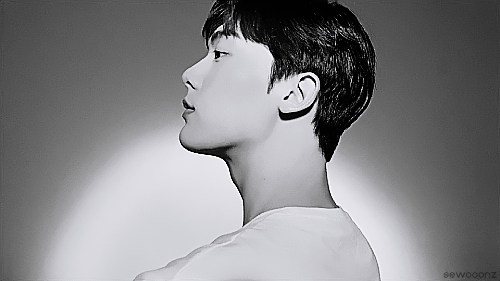
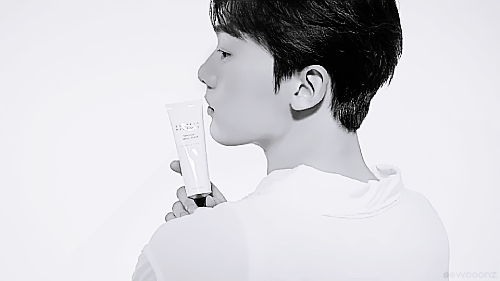
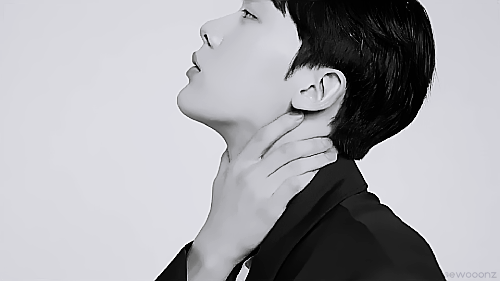

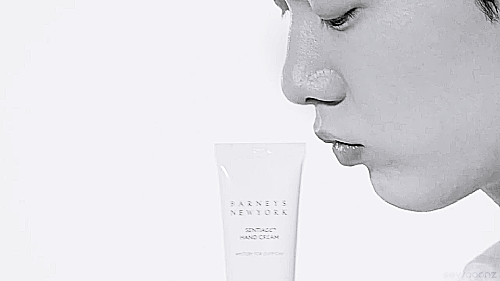

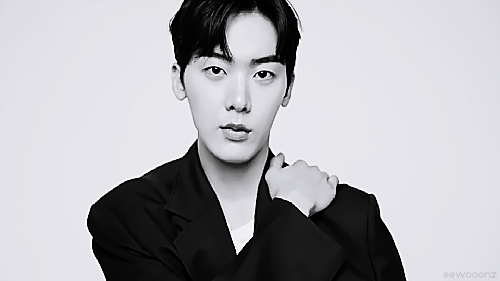
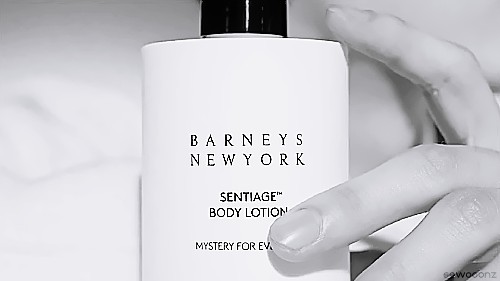
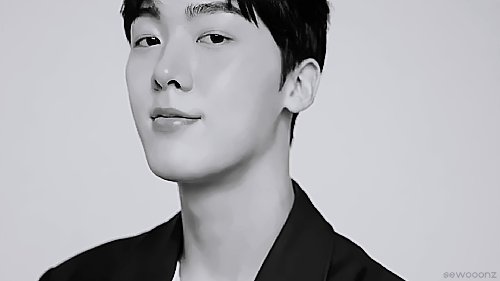
yoon sanha with barneys new york beauty korea (2024)
#sewooonz#my gifs#astro#yoon sanha#astro sanha#astronet#arohanet#ultkpopnetwork#kpopedit#maleidolsedit#kpopccc#kpopco#barneys new york beauty korea#gifset#q
16 notes
·
View notes
Text
Barneys Adds a Dose of Vitamin C to its K-Beauty Selection
Barneys Adds a Dose of Vitamin C to its K-Beauty Selection
Barneys New York reinforced its commitment to Korean beauty with the addition of Vitabrid C12, a vitamin C-driven skin- and hair-care line developed in South Korea. Launching this week in Barneys and barneys.com are eight vitamin C-based skin and hair items ranging in price from $25 to $80 under the Vitabrid …read more
Via:: WWD
View On WordPress
0 notes
Text





yoon sanha with barneys new york beauty korea (2024)
#sewooonz#my gifs#astro#yoon sanha#astro sanha#white#astronet#arohanet#ultkpopnetwork#kpopedit#maleidolsedit#kpopccc#kpopco#barneys new york beauty korea
16 notes
·
View notes
Text










yoon sanha with barneys new york beauty korea (2024)
#sewooonz#my gifs#astro#yoon sanha#astro sanha#astronet#arohanet#ultkpopnetwork#kpopedit#maleidolsedit#kpopccc#kpopco#barneys new york beauty korea#gifset#q
16 notes
·
View notes